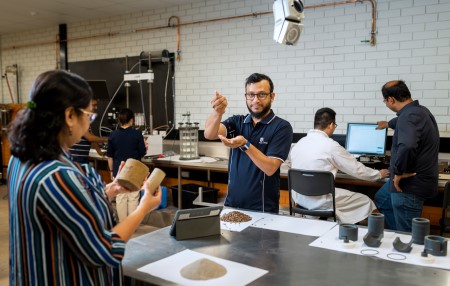Chief Investigators: Professor Md Mizanur Rahman, Professor Simon Beecham, Dr Md Rajibul Karim
Year Commenced: 2019 and continuing
Problem
Mixing mineral additives and/or artificial stabilisers with soils is the most common method for stabilisation, and erosion, dust and leachate control. These techniques are expensive and often hazardous to humans. Also, the production of common stabilising materials, e.g., lime and cement, is energy-intensive and has very high emissions, accounting for 8% of worldwide emissions
The Paddy melon (C. myriocarpus), distributed across Australia, is a very invasive weed which is difficult and expensive to eradicate. If we can tap into the productive use of Paddy melons, we will reduce the current economic losses due to weed control and production loss, and develop a nature-inspired alternative stabilisation process, based on its enzymes. Our project addresses major problems both in construction and agriculture and lays the groundwork for sustainable industrial-scale soil stabilisation.
Project Summary
Paddy melon seeds are rich in urease enzymes that are capable of combining carbonate ions with calcium ions at inter-particle spaces in soil. This induces precipitation of calcium carbonate that will bind particles and stabilise the soil. This process is carbon-neutral and does not require an energy-intensive process. A previous UniSA study found that an average of 1.5 t/ha and 4.5 t/ha (Paddy melon seeds) can be collected from dense weed colonies and cultivation, respectively, making the Paddy melon a viable source of crude urease enzymes for industrial production.
Impact
Our project can significantly reduce the economic losses due to Paddy melon control and associated agricultural production loss. More importantly, the project has the potential to have a major impact on the community by greatly reducing the carbon footprint of construction. Just a 1% reduction in the carbon footprint from the construction industry will mean preventing approximately 1 million tons of from entering the atmosphere every year.




